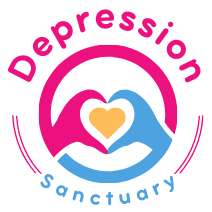Could it be that many black teens with depression are not being properly diagnosed and treated due to racial bias in depression screening? A study published online on October 26, 2017 in the Journal of the Society for Social Work and Research indicates that this may indeed be occurring.
The study looked at a common depression screening tool called the Center for Epidemiologic Studies Depression Scale (CES-D). The CES-D is a 20-item questionnaire that was developed by Lenore Sawyer Radloff in 1977. It asks the person taking it to rate how often over the past week that they have experienced depression symptoms like loneliness, loss of appetite and poor sleep. Respondents can select a response ranging from 0-3, with 0 meaning “rarely,”, 1 “some or little of the time, 2 “moderately or much of the time,” and 3 “most or almost all of the time.” The higher the score the person receives, the greater their depression symptoms are.
To gauge its effectiveness in detecting depression among young black adolescents, the research team looked at test results obtained by 800 young people between the ages of 11 and 21 living in public housing in four different cities in the United States. It found that the CES-D was not as good at detecting depression among this group.
The problem with screening tests like the CES-D, says Sean Joe, a professor at Washington University in St. Louis, is that the population that was used to develop them was middle-class Caucasian women. This means that the language selected is representative of the cultural experience of this group and may not be applicable to people of other races or socioeconomic status. Screening tests like the CES-D typically look at how people experience depression in four areas: feelings of sadness, interpersonal problems, physical symptoms and a lack of feelings of happiness. Black youth, however, tend to report symptoms which do not fit the same mold as what is being looked for in the CES-D. More often, they tend to experience symptoms like physical pain and interpersonal problems, but may not speak of feeling sad.
Researchers say this bias towards detecting depression based upon the experiences of white women may account for what has been called the “black-white paradox,” a phenomenon in which blacks appear to suffer from depression at lower rates than their white counterparts. Researchers say this may actually be due to the fact that black depression is being under-detected due to racial bias in screening tools.
Given that the first step in getting treated for depression is a proper diagnosis, it is very important that screening tests are designed to properly detect this condition in all demographic groups. Scientists hope that by revealing the inherent racial bias in how these tests are constructed, it will lead to better diagnosis and treatment for groups who may currently be falling through the cracks.
Sources:
Alnuweiri, Tamim. “Are the Current Methods for Diagnosing Depression Racist?” Well+Good. Well+Good LLC. Published: February 14, 2018. Accessed: February 14, 2018.
“Center for Epidemiological Studies – Depression. Contruct: Depressive Symptoms.” American Psychological Association. American Psychological Association. Accessed: February 14, 2018.
Lu, Wenhua, et. al. “Psychometric Properties of the CES-D Among Black Adolescents in Public Housing.” Journal of the Society for Social Work and Research. (2017) 8:4, 595-619.
Pandika, Melissa. “The Test We Use to Detect Depression Is Designed for White People.” Tonic. Vice. Published: February 13, 2018. Accessed: February 14, 2018.
Radloff, Lenore Sawyer. “The CES-D Scale: A Self-Report Depression Scale for Research in the General Population.” Applied Psychological Measurement. (June 1, 1977) 1:3, 385-401.
Nancy Schimelpfening is the founder of Depression Sanctuary. Unless otherwise stated, all of the content on Depression Sanctuary is written by and maintained by Nancy. Nancy has a master’s degree in community health education from Old Dominion University in Norfolk, VA. She was the About.com (now Verywell.com) expert on depression from 1998-2016. She has also written for other online publications, including Healthline, Healthgrades Professional, Health Digest, and MindBodyGreen.

